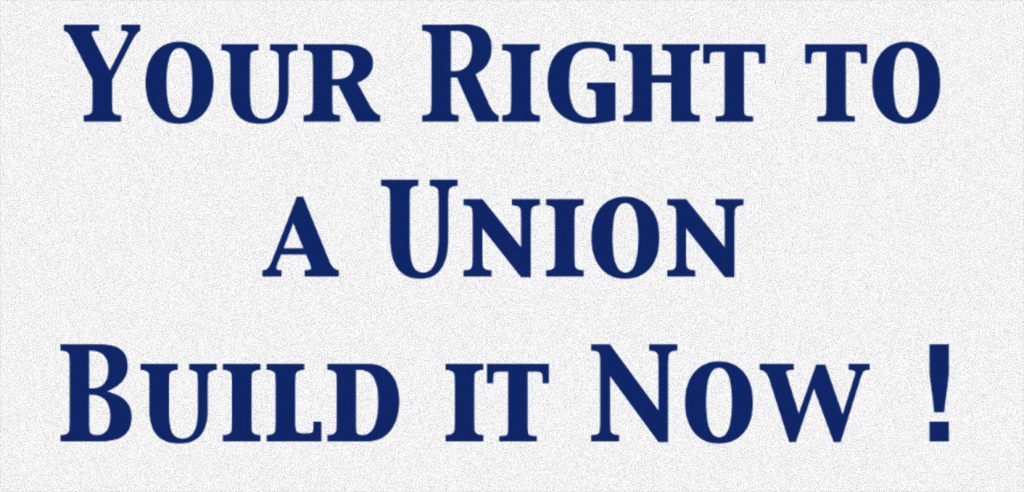By Colette Perold and Eric Dirnbach

Section 7 rights refer to the rights that workers in the private sector have to organize collectively. It’s part of the National Labor Relations Act (NLRA), which only applies to the private sector.
It’s important to note that workers in the public sector have an intrinsic right to organize through their constitutional First Amendment rights of free speech and assembly. Workers in the public sector may also choose to organize around specific municipal, county, or state labor bills (see an analysis of how public-sector collective-bargaining legislation in particular varies by state).
Your ability to win justice at work will always come from the amount of power you build with your co-workers.
Before we dive in further, a word of caution: worker organizing is always fundamentally a question of power, not law. While you have the rights no matter where you work to organize with your co-workers, your ability to win justice at work will always come from the amount of power you build with your co-workers, not from a legal decision handed down by the government. Nonetheless, when used appropriately, legal tactics such as leveraging Section 7 rights can help protect and even strengthen organizing efforts.
Section 7 of the National Labor Relations Act (NLRA) declares that all workers have a right to engage in “concerted activities,” meaning collective action at work. This means that a group of workers acting together can make demands of their employer and do so with the protection of the law. This does not apply to individuals — only to groups. If one worker asks a boss for paid sick time, according to the law she can be fired. But if a group of workers asks a boss for paid sick time, according to the law they cannot.
This means that a group of workers acting together can make demands of their employer and do so with the protection of the law. This does not apply to individuals — only to groups.
Here’s Section 7 in full:
“Employees shall have the right to self-organization, to form, join, or assist labor organizations, to bargain collectively through representatives of their own choosing, and to engage in other concerted activities for the purpose of collective bargaining or other mutual aid or protection, and shall also have the right to refrain from any or all of such activities except to the extent that such right may be affected by an agreement requiring membership in a labor organization as a condition of employment as authorized in section 8(a)(3) [section 158(a)(3) of this title].”
Section 7
The employer must know why you are taking collective action.
A crucial aspect of Section 7 is that the employer must know why you are taking collective action. If the action is carried out in secret, and the boss has no information that concerted activity is taking place, it may not be protected under Section 7, and workers could be disciplined. Workers who do not have officially recognized unions are still protected by this law, and pre-majority unions can craft very effective strategies with knowledge of how Section 7 applies to them. A United Electrical, Radio and Machine Workers of America (UE) pamphlet, “Your Right to a Union, Build it Now” from 2008 gives a helpful example.
“Workers sign a petition demanding the boss meet with them to negotiate a longer lunch period. That is concerted protected activity. It is a group activity, it is about a workplace issue and obviously the boss upon reading the petition knows what it is all about. If a group of workers leave work early because they are mad that the lunch period was shortened, and they never tell the boss why they are leaving, it may not be protected activity. The boss could discipline the workers for leaving work early and truthfully claim that he didn’t know they were protesting the cut in the lunch period.”
The pre-majority unions we write about in this report use Section 7 rights as a way to protect and strengthen collective action. For a full explanation of how to identify organizing issues and plan campaigns using Section 7, see “Your Right to a Union, Build it Now.”
For information on how to use Section 7 to strike without union recognition, see this article by Richard de Vries, originally published in “Labor Notes.”
